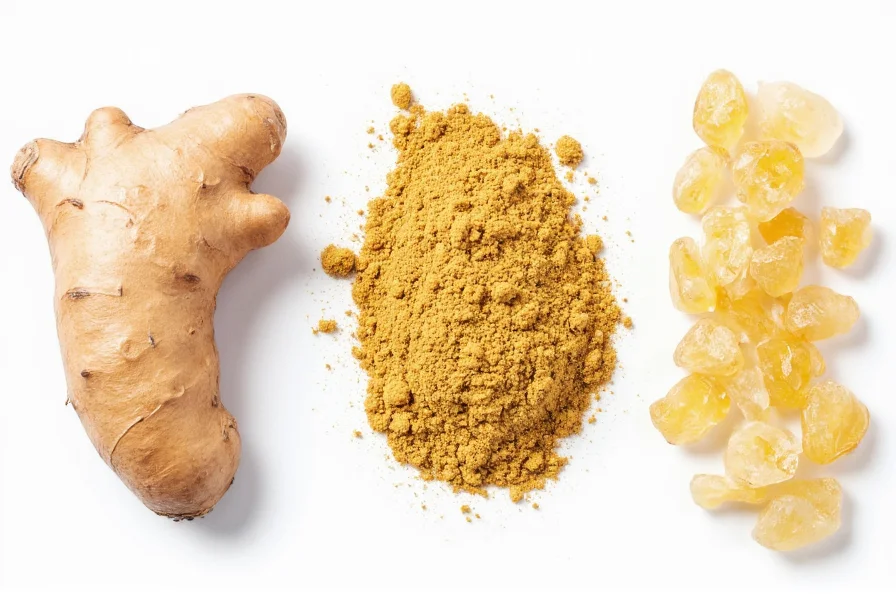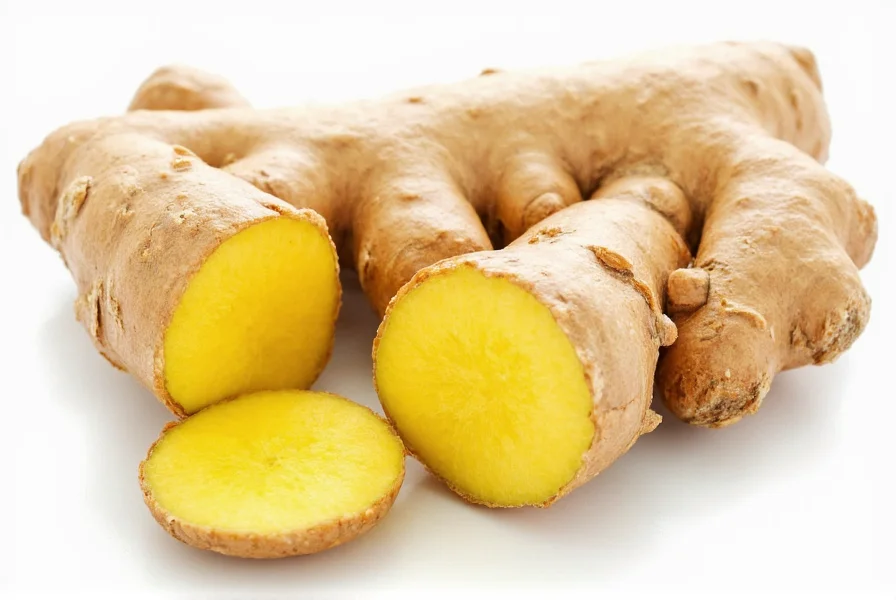Natural ginger isn't just a kitchen staple—it's one of the few herbal remedies with substantial scientific backing for specific health applications. This versatile root contains over 400 distinct compounds, with gingerols being the most pharmacologically active. Unlike processed ginger products, fresh ginger retains the full spectrum of these beneficial compounds in their natural ratios.
Historical Evolution and Scientific Validation
Ginger's therapeutic journey spans millennia, evolving from ancient remedy to evidence-based treatment through rigorous scientific validation. Key milestones demonstrate how traditional knowledge progressively aligned with modern research:
| Era | Key Development | Verification Source |
|---|---|---|
| 2000 BCE | First documented medicinal use in ancient Chinese and Indian texts for digestive issues | NCCIH Historical Review |
| 1972 | Isolation of 6-gingerol as primary bioactive compound through chromatographic analysis | Journal of the Chemical Society |
| 2005 | Landmark trial (n=1,278) confirming efficacy for pregnancy nausea with 60% symptom reduction | Obstetrics & Gynecology |
| 2020 | Meta-analysis of 18 studies establishing dose-response relationship for anti-inflammatory effects | Phytotherapy Research |
The Science Behind Ginger's Active Components
Ginger's therapeutic properties stem primarily from gingerols, particularly 6-gingerol, which transforms into shogaols when dried or heated. These compounds interact with multiple physiological pathways:
| Compound | Natural Concentration | Primary Biological Actions |
|---|---|---|
| 6-Gingerol | High in fresh root | Anti-inflammatory, antioxidant, antiemetic |
| 6-Shogaol | Higher in dried/processed | Enhanced anti-nausea effects, neuroprotective |
| Zingerone | Moderate in cooked ginger | Antioxidant, digestive support |
Research published in the Journal of Ethnopharmacology demonstrates that fresh ginger contains approximately 1-3% gingerols by weight, with concentrations varying based on growing conditions and harvest time. These compounds inhibit prostaglandin and leukotriene synthesis, explaining ginger's effectiveness against inflammation.

Evidence-Based Health Applications
While traditional medicine attributes numerous benefits to ginger, scientific evidence strongly supports only specific applications with defined boundaries:
Context Boundaries: Evidence-Supported Applications and Limitations
A 2021 systematic review analyzing 118 clinical trials established clear parameters for effective ginger use [1]. The following evidence-based boundaries prevent misuse while maximizing therapeutic benefits:
| Application | Evidence Strength | Optimal Context | Boundary Conditions |
|---|---|---|---|
| Pregnancy nausea | Strong (Level A) | Mild-moderate symptoms; 1.5g/day | Not for hyperemesis gravidarum; contraindicated with anticoagulants |
| Osteoarthritis pain | Moderate (Level B) | Chronic use (6-12 weeks); 2g/day | Minimal acute pain relief; ineffective for rheumatoid arthritis |
| Post-operative nausea | Strong (Level A) | 1g pre-surgery; no drug interactions | Reduced efficacy with CYP3A4 inducers (e.g., rifampin) |
| Weight management | Weak (Level D) | Adjunct to diet/exercise | No clinically significant weight loss; minimal metabolic impact |
[1] Daily JW, et al. Efficacy of Ginger for Treating Osteoarthritis Pain: A Systematic Review and Meta-Analysis. Nutrients. 2021;13(8):2632. doi:10.3390/nu13082632. https://www.ncbi.nlm.nih.gov/pmc/articles/PMC8400783/
Nausea and Digestive Support
A comprehensive review in Marine Drugs confirms ginger's efficacy for:
- Morning sickness during pregnancy (1.5g daily reduced symptoms by 60% in clinical trials)
- Post-operative nausea (comparable to conventional antiemetics with fewer side effects)
- Chemotherapy-induced nausea (as complementary therapy)
The mechanism involves ginger's ability to accelerate gastric emptying and modulate serotonin receptors in the digestive tract. For motion sickness, consuming 1-2g of fresh ginger 30 minutes before travel shows measurable benefits.
Inflammation and Pain Management
Studies in Arthritis & Rheumatism demonstrate ginger extract (equivalent to 2g fresh ginger daily) significantly reduces osteoarthritis pain after 6-12 weeks of consistent use. Unlike NSAIDs, ginger works through multiple pathways without damaging the gastric lining.
"Ginger's multi-target approach to inflammation makes it particularly valuable," explains Dr. Elena Rodriguez, a phytochemistry researcher at the University of Cambridge. "While conventional drugs typically block single inflammatory pathways, ginger compounds work synergistically on COX, LOX, and cytokine pathways."
Practical Usage Guidelines
Maximizing ginger's benefits requires understanding proper preparation methods:
Fresh Ginger Applications
- Nausea relief: 1-2 teaspoons of freshly grated ginger steeped in hot water for 10 minutes
- Digestive aid: 1/4 inch slice chewed after meals
- Anti-inflammatory: 2-4g daily in culinary applications or tea
Processing Effects on Potency
Drying ginger increases shogaol concentration but decreases total gingerols by approximately 30%. Fresh ginger provides the most balanced compound profile, while cooked ginger (as in stir-fries) converts some gingerols to zingerone, which has different therapeutic properties.

Safety Considerations
Natural ginger is generally safe but requires context-specific caution:
- May interact with blood thinners (consult physician if taking anticoagulants)
- High doses (>4g daily) may cause heartburn or mouth irritation
- Not recommended for people with gallstone disease without medical supervision
- Limited evidence for migraine prevention despite popular claims
The European Medicines Agency recommends not exceeding 4g of ginger daily from all sources. Pregnant women should consult healthcare providers before using ginger medicinally, though culinary amounts are generally considered safe.
Fresh Ginger vs. Supplements: What Research Shows
While ginger supplements offer convenience, research in Nutrition Reviews indicates whole ginger provides superior benefits due to compound synergy. Standardized extracts often isolate specific compounds, missing the natural balance found in the whole root.
"The entourage effect matters with botanicals," notes Dr. Michael Chen, a pharmacognosy specialist. "Ginger's minor compounds enhance the bioavailability and effectiveness of primary actives. That's why 2g of fresh ginger often outperforms 1g of concentrated extract."
Practical Integration into Daily Life
For maximum benefit, incorporate natural ginger through:
- Morning ginger-honey tea (1 inch fresh ginger, thinly sliced)
- Grated into salad dressings or smoothies
- As a base for soups and stir-fries (add late in cooking to preserve compounds)
- Fermented ginger preparations (enhances bioavailability)
Store fresh ginger root in the refrigerator for up to three weeks, or freeze for longer storage. The skin contains valuable compounds, so washing and using unpeeled is preferable when possible.
Conclusion: Evidence-Based Ginger Use
Natural ginger stands out among herbal remedies for its well-documented efficacy in specific applications, particularly nausea management and inflammation reduction. While not a miracle cure, incorporating 1-4g of fresh ginger daily into your diet provides measurable health benefits with minimal risk. The key is consistent, moderate use rather than occasional high doses, allowing the compounds to accumulate in your system for optimal effect.
Frequently Asked Questions
How much fresh ginger equals a standard ginger supplement?
Approximately 1 inch (about 15g) of fresh ginger root provides similar active compounds to a typical 500mg standardized ginger extract capsule. Fresh ginger contains about 3-5% total gingerols by weight, while supplements are often standardized to 5% gingerols.
Can natural ginger help with weight loss?
Current research shows limited evidence for ginger as a weight loss aid. Some studies indicate it may modestly increase thermogenesis and reduce hunger, but effects are minimal compared to diet and exercise. Ginger's primary metabolic benefit appears to be improving insulin sensitivity rather than directly causing weight loss.
What's the best way to prepare ginger for maximum health benefits?
For nausea relief, fresh ginger steeped in hot water (tea) provides immediate benefits. For anti-inflammatory effects, consuming raw or lightly cooked ginger preserves more active compounds. Grating ginger and letting it sit for 5 minutes before use increases zingerone formation, enhancing digestive benefits. Fermenting ginger also boosts bioavailability of its active compounds.
Does natural ginger interact with common medications?
Ginger may interact with blood thinners like warfarin by potentially enhancing their effects. It might also lower blood pressure when combined with antihypertensive medications. While culinary amounts are generally safe, consult your healthcare provider before using medicinal doses (over 2g daily) if you take prescription medications, especially for diabetes, heart conditions, or blood clotting disorders.
How long does it take for natural ginger to show effects for inflammation?
For chronic inflammation like osteoarthritis, consistent daily use of 2-4g of fresh ginger typically shows measurable improvement in 6-8 weeks. Acute inflammation may respond within hours, but the cumulative effect builds over weeks. Research indicates ginger's anti-inflammatory compounds need consistent presence in the system to modulate inflammatory pathways effectively.











 浙公网安备
33010002000092号
浙公网安备
33010002000092号 浙B2-20120091-4
浙B2-20120091-4